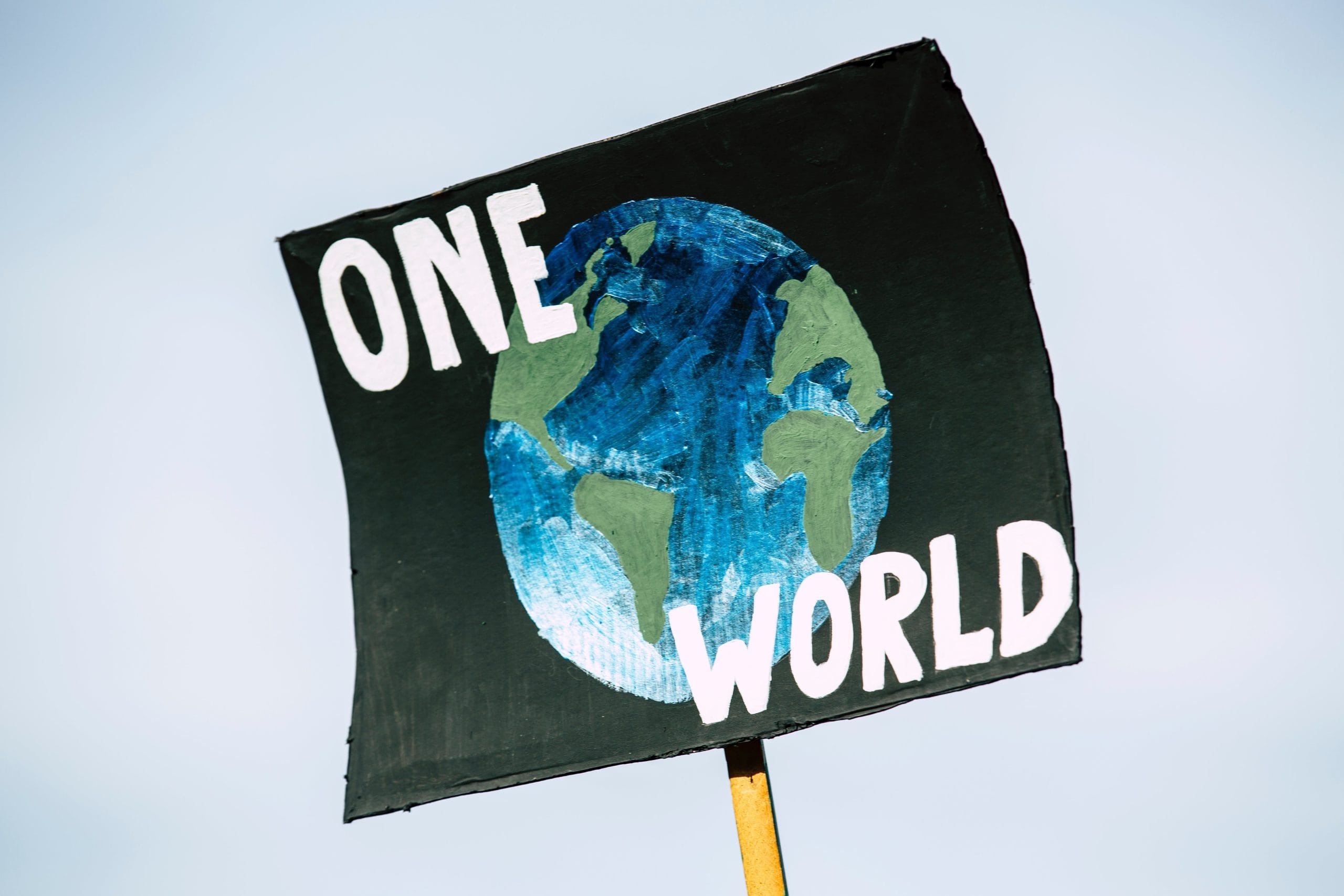Author: Cherie Rae
Art has the unique power to elevate local issues into the global spotlight, transforming regional struggles into universal conversations through its evocative and thought-provoking imagery.
Climate change is one of the most pressing global challenges of our time, with far-reaching consequences for our environment, economy, and society. As its impacts continue to intensify, local governments play a pivotal role in adapting to and mitigating the effects of climate change. To meet this challenge, it’s essential for local governments to adopt holistic strategies that go beyond
traditional environmental policies. Arts and culture can be a powerful, often overlooked, tool in addressing climate change, fostering community engagement, and promoting sustainable practices.
In this blog, we will explore the critical role of arts and cultural strategies in local government efforts to combat climate change, we will share with you some concrete examples from national and international efforts, and we will reflect our own observations of how widespread the use of arts and culture by local government is in combatting climate change.
“Any form of art is a form of power; it has impact, it can affect change – it can not only move us, it makes us move.”
– Ossie Davis
Climate Change: A Local Issue
Local governments are at the frontline of climate change impacts. Rising temperatures, extreme weather events, sea-level rise, and other climate-related challenges directly affect communities, infrastructure, and natural resources within their jurisdictions. To tackle these issues effectively, local governments must not only reduce greenhouse gas emissions but also engage their communities and foster resilience.
The Power of Arts and Culture
Art has a unique ability to inspire, educate, and unite people. Cultural expressions, including music, visual arts, theatre, and literature, can convey complex messages and emotions, making them a potent medium for addressing climate change. Here’s how arts and culture can play a vital role:
- Raising Awareness: Local governments can utilise art to raise awareness about climate change and its impacts on their communities. Artistic exhibitions, public installations, and cultural events can convey the urgency of the issue, making it more tangible and relatable to residents.
- Education and Advocacy: Arts and cultural activities can educate the public about the science behind climate change, sustainable practices, and the importance of collective action. Local governments can collaborate with artists and cultural institutions to develop educational programs and workshops.
- Fostering Innovation: Creative thinking is essential for finding sustainable solutions. Artistic endeavours encourage innovative thinking, pushing communities to explore new ways to reduce carbon emissions, conserve resources, and adapt to a changing climate.
- Building Resilience: Climate resilience is a critical aspect of local climate action. Cultural heritage can serve as a source of resilience, preserving traditions and knowledge that can help communities adapt to changing conditions.
- Acknowledging and learning from First Nations peoples: Indigenous art can be a powerful tool for raising awareness about climate change. Artworks that depict the impacts of climate change on local communities can be emotionally impactful, fostering greater public engagement and support for climate action. By supporting indigenous-led art and cultural initiatives, local governments can foster community-driven approaches to climate change.
Successful Examples
Several local governments here in Australia have successfully integrated arts and culture into their climate strategies:
- BlakLash Projects – Climate Justice through Art: BlakLash Projects is an Indigenous-led organisation based in Melbourne that focuses on climate justice and social change through the arts. They collaborate with Indigenous and non-Indigenous artists to create powerful artworks and performances that address climate change and its impacts on Indigenous communities.
- Sydney Festival – Environmental Initiatives: The Sydney Festival, one of Australia’s largest cultural events, has incorporated environmental sustainability into its programming. They have introduced initiatives such as reducing waste, promoting reusable containers, and hosting climate-themed performances and discussions to raise awareness about environmental issues.
- Art and Environment – Tasmanian Land Conservancy: The Tasmanian Land Conservancy, in partnership with artists, has developed the “Art and Environment” program. This initiative involves artists participating in residencies on conservation properties, where they draw inspiration from the natural environment to create artworks that highlight the importance of biodiversity conservation and climate action.
- Climate Century – Art and Climate Advocacy: Climate Century is an Australian organisation that collaborates with artists to communicate climate science and advocate for climate action. They have organised exhibitions and public art installations to engage the public in discussions about climate change, including its local impacts.
- Green Music Australia – Musicians for Climate Action: Green Music Australia is a nonprofit organisation that works with musicians and music festivals to promote sustainability and climate action. They have successfully encouraged music festivals to reduce their carbon footprints, promote public transportation to events, and engage audiences on climate issues through music.
- Climate Change Theatre Action (CCTA) – Australian Contributions: The Climate Change Theatre Action initiative is a global movement that encourages playwrights and artists to create climate-themed plays and performances. Australian theatre groups and playwrights have actively contributed to CCTA, using the power of storytelling to address climate change concerns.
When we look across the globe, there are equivalent examples of local government action, including:
- New York City’s CoolRoofs Program: The city initiated a public mural project that transformed rooftops into colourful artworks while reflecting sunlight and reducing urban heat island effects.
- Bristol’s Green Capital: Bristol, UK, used its status as the European Green Capital to host a year-long program of cultural events and projects that promoted sustainability and climate action.
- Art Basel Miami Beach: This annual art fair incorporates sustainability initiatives, highlighting climate change concerns and engaging artists in climate-themed projects.
How widely is Climate Change embedded into the strategic pillars of Arts and Cultural Strategies?
The Strategic Pillars of a strategy are designed to focus and align the efforts of an organisation. They tell us immediately what that organisation stands for and will invest its resources into. When Spark codesigns Arts and Cultural strategies with local governments, we want to ensure that the strategic pillars relate to those in the Council Plan and that they reflect the macro-environment or context in which the local government is operating
In mid-2023, Spark Strategy reviewed the Arts and Culture / Creative Strategies of all 79 local governments in Victoria and found:
- 60 (76%) had a published Arts and Culture / Creative Strategy and a further 3 were in development
- Despite being prevalent in the overarching Council Plans, only 7 (12%) of the 60 Councils with Arts and Culture Strategies, featured a strategic pillar focusing on environment or sustainability
- The top 5 most cited strategic pillar categories across all LGA Arts and Cultural Strategies were
- Supporting Creative Industry (55%)
- Promoting and Embedding Arts (40%)
- Participation (43%)
- Connection (35%)
- Access for all abilities ((33%)
Strategies for Local Governments
Local governments can take several steps to leverage arts and culture in their climate change strategies:
- Collaborate with Local Artists: Engage local artists, musicians, and performers to create climate-focused works of art and performances that resonate with the community.
- Integrate Arts into Climate Education: Incorporate climate-themed art and cultural activities into school curricula and community outreach programs.
- Public Art Installations: Support the creation of public art installations that convey climate messages, such as sculptures made from recycled materials or murals highlighting environmental issues.
- Cultural Festivals: Host cultural festivals that emphasise sustainability, featuring ecofriendly practices and promoting green living.
- Art and Climate Grants: Provide grants to artists and cultural organisations working on climate-related projects, encouraging innovative approaches.
Conclusion and invitation
In the fight against climate change, local governments must harness every available tool. Arts and culture can be a transformative force, allowing communities to connect with the climate crisis on a deeper level, inspiring action, and fostering resilience. By embracing arts and cultural strategies, local governments can create a more sustainable and climate-resilient future for their communities while also enriching their cultural landscapes. It’s time for local governments to recognise and unleash the power of art in the battle against climate change.
Spark Strategy would love to share the broader learnings of its benchmarking with the local government arts and culture sector with you. Reach out to our Public Sector Lead, Cherie Rae to schedule an online or in-person catch up (cherie@sparkstrategy.com.au).
References
- Anderson, R., & Pearsall, H. (2016). Art and Climate Change: Artists as Champions of the Environment. Routledge.
- Art Basel Miami Beach. (n.d.). Sustainability Initiatives. Retrieved from https://www.artbasel.com/miami-beach/sustainability
- BlakLash Projects – Climate Justice through Art: BlakLash Projects. (n.d.). Home. Retrieved from https://www.blaklashprojects.com/
- Bristol Green Capital. (n.d.). About Bristol Green Capital. Retrieved from https://www.bristolgreencapital.org/about-bristol-green-capital/
- City of New York. (n.d.). CoolRoofs Program. Retrieved from https://www1.nyc.gov/site/sustainability/initiatives/coolroofs.page
- Climate.gov. (n.d.). Climate Resilience Toolkit. Retrieved from https://toolkit.climate.gov/topics/climate-resilience
- Climate Century – Art and Climate Advocacy: Climate Century. (n.d.). Climate Century. Retrieved from https://climatecentury.com/
- Climate Change Theatre Action (CCTA) – Australian Contributions: Climate Change Theatre Action. (n.d.). About Us. Retrieved from https://www.climatechangetheatreaction.com/about-us/
- Conant, E. (2015). Cultural Resilience and Climate Change: An Interdisciplinary Perspective on the Power of Culture. UNESCO.
- Green Music Australia – Musicians for Climate Action: Green Music Australia. (n.d.). About Us. Retrieved from https://greenmusic.org.au/about/
- IPCC. (2021). Climate Change 2021: The Physical Science Basis. Contribution of Working Group I to the Sixth Assessment Report of the Intergovernmental Panel on Climate Change. Cambridge University Press.
- Lu, J. (2018). Creative Arts as an Effective Strategy for Climate Change Engagement. Environmental Communication, 12(1), 92-106.
- National Endowment for the Arts. (2017). How the Arts Can Help Combat Climate Change. Retrieved from https://www.arts.gov/sites/default/files/Arts-Climate-Change-NEA.pdf
- Sydney Festival – Environmental Initiatives: Sydney Festival. (n.d.). Greening Sydney Festival. Retrieved from https://www.sydneyfestival.org.au/about-us/greeningsydney-festival
- Tasmanian Land Conservancy – Art and Environment: Tasmanian Land Conservancy. (n.d.). Art and Environment. Retrieved from https://tasland.org.au/what-we-do/artand-environment/
- United Nations. (2015). Transforming our world: The 2030 Agenda for Sustainable Development. Retrieved from https://sdgs.un.org/goals
- United Nations Framework Convention on Climate Change (UNFCCC). (n.d.). Art4Climate. Retrieved from https://unfccc.int/climate-action/momentum-for-change/women-forresults/art4climate
- United Nations Framework Convention on Climate Change (UNFCCC). (n.d.). Momentum for Change. Retrieved from https://unfccc.int/climate-action/momentum-for-change

